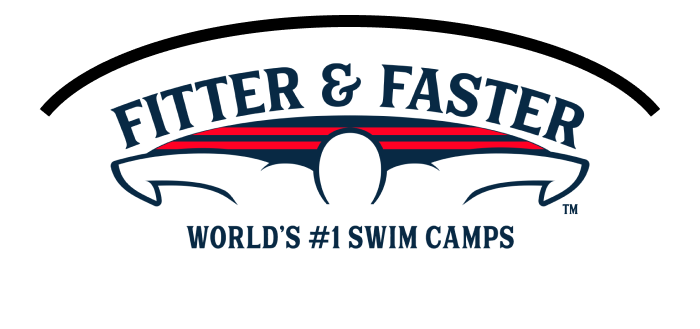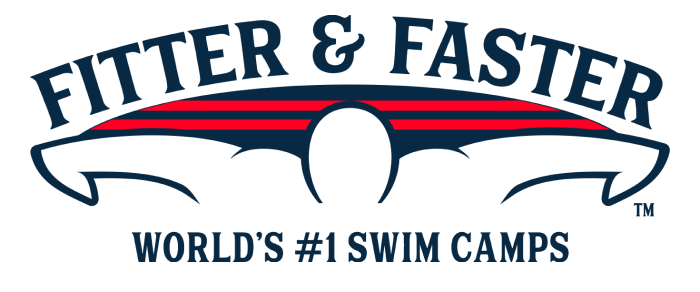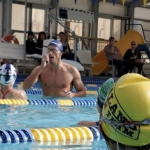Past Clinic: SPRINTING & 200 RACE STRATEGY SWIM CAMP (Ages 10 to 12)
Houston Swim Club - Sharpstown
8307 Augustine Dr,
Houston,
TX 77036
A description of what was covered at this past clinic is below the upcoming clinics.
Upcoming Swim Clinics and Camps
Within 250 miles of Houston, TX.
Past Clinic
Introduction
Fitter & Faster is returning to the Houston Swim Club - Sharpstown to produce a 3-day swim camp for ages 10 to 12 on December 27-29, 2023! If you are looking for the 13 & over camp page, click here.
SPRINTING & 200 RACE STRATEGY SWIM CAMP (Ages 10 to 12)
-> DAY 1 (Wed, Dec 27): Establishing Speed
-> DAY 2 (Thurs, Dec 28): Sprinting Skills
-> DAY 3 (Friday, Dec 29): Race Strategy & Execution: 200's
Scroll down for details on the curriculum!
-> Availability in each session is limited to 24 participants to ensure the best learning experience.
-> SAVE when you purchase the “Entire Camp Bundle” for your swimmer.
SESSION START TIMES FOR BOTH DAYS: Check in 8:15 AM, Camp 8:30-11 AM
Suggested Participants
Our top priority is to provide a world-class learning experience for all participants at all of our camps. This camp has sessions for swimmers ages 10 to 12. Participants will range from one-year of competitive swimming experience to AAAA times and faster. If you are the parent of a child under the age of 10 and would like for your child to be considered for these camps, please complete this questionnaire.
Curriculum
Over three days, participants will learn techniques for swimming all their races of 200 yards and less as fast as possible with good technique. This important swim camp will position competitive swimmers ages 10-12 for success as they mature. This swim camp will be led by Elite Clinician: Marius Kusch!
Day 1: ESTABLISHING SPEED (Dec 27)
At this session your swimmer will practice the essential components to high performance sprinting.
- BODY POSITION: A competitive swimmer’s body position is the key to fast swimming. Most swimmers are NOT hydrodynamic in the water - and that has a big effect on how fast they “allow” themselves to swim - especially as they get older. Let’s find the right body position for your swimmer.
- LENGTH OF STROKE: Lengthening their stroke will enable your swimmer to “catch” and hold onto more water to propel them as they swim. Whereas a short stroke is inefficient and not sustainable for very long. The clinicians will work with participants on this important skill for fast swimming.
- TEMPO: When sprinting short races young swimmers often tend to take too many strokes (“spin their wheels”) and not “hold onto the water”. At this camp we will find the appropriate tempo to maximize their own personal speed.
Day 2: SPRINTING SKILLS (Dec 28)
On Day 2, your swimmer will apply the skills that we practiced on the first day of this camp to important segments of every sprint race, including the moment your swimmer pushes off the wall; breakouts; finishes and all out sprinting!
- BREAKOUTS: Many swimmers add movement within their breakout that creates drag and destroys all of the power created during their underwaters. Participants will work on timing their breakouts to accelerate to explode into each lap.
- SPRINTING: On Day 1 your swimmer worked on body position, tempo and length of different strokes. Today we are going to apply those skills to swimming “all out” freestyle & backstroke on top of the water with efficiency and power.
- WALLS, WALLS, WALLS: Approaching the wall at top speed in preparation for the fastest turn is vital. Swimmers will work on techniques to get in and out of every wall faster!
- FINISHES: Dropping time and even winning or moving up a few spots in the results can all come down to the last stroke! A well-timed finish at full speed, with full-arm extension and head down can make a difference of up to a full second in a race! Your swimmer is going to learn how to take advantage of the finish to drop time!
- SPRINTING APPLICATION: Swimmers at this session will work on applying their newly developed skills during racing scenarios. As with all the other segments of this camp, the clinicians will provide feedback for your swimmer to take home and apply at upcoming practices and meets.
Day 3: Race Strategy & Execution: 200's (Dec 29)
“How should I swim this race?” How many times have you heard this? Swimmers of all ages and abilities have the same question. Races of 200 yards and meters are some of the most fun to swim and watch because of the wide variety of strategies that swimmers use. There are many different ways to swim a fast 200 in every stroke. The name of the game is understanding all the different ways to execute the race and seeing what works for you!
- STRATEGIES: At this camp your swimmer will learn various strategies that elite swimmers have executed with top results. Before your camp you will be emailed links to several elite level races of 200 yards or meters across all strokes, along with a brief summary of each. At the camp we will discuss and practice those strategies.
- "EASY SPEED": Establishing stroke length with the proper tempo after the breakout is essential to setting up a strong 200 in any stroke. Going as fast as we can with ease is the key to “easy speed”. We don’t want to kick or pull too hard on the first 50. This will cause early fatigue. Swimmers will work on techniques to swim as fast as they can in all strokes with “ease”.
- CONTROL: Your elite clinician will teach participants how to manipulate their speed and energy at different points in a race.
- FRONT END & BACK END SPEED: The first 100 (front-end) and second 100 (back-end) of the 200 can be broken up to ensure an effective plan. Some swimmers go out really fast and hang on, while others control the first 100 and try to back-end the race at full speed. Testing new strategies at this camp will give your swimmer confidence in their next race.
- UNDERWATER KICK COUNT: Figuring out the optimal number of kicks off each wall is essential to a fast 200. A swimmer wants to spend only the absolute necessary amount of time underwater to establish speed with each length. We want to avoid losing our breath and/or taking weak kicks.
- BREATHING PATTERN: Establishing a breathing pattern will help the swimmer stay focused and relaxed on their own swim. It will also help them finish the race with enough oxygen to close the race at full speed.
- ESTABLISHING A PLAN: A racer should have a plan for the race before it is swum! What’s your plan for front-end and back-end speed? How much time will you spend underwater before your first breath? How often will you breath each length?
- TEST THE PLAN IN PERSON: Now we test it! Swimmers will do a complete short set at the end of the session to practice racing the plan and stroke under race conditions. We’ll get off the blocks and practice some front end swims, push some back end swims, and race some straight 200’s.
- CONFIDENCE: One of the essential elements to dropping time and swimming fast is being willing to try new strategies when swimming a race. It’s ok to feel nervous and a little bit uncomfortable before your race! Entering a race with a strategy will help your swimmer with their confidence… and that confidence will help propel them to the results they aim to achieve.
ASK QUESTIONS
Swimmers and parents are invited to ask the clinicians questions during a Q&A session. Gain insight into their training regimen, diet and nutrition, and recovery tactics.
WATCH THE CLINICIANS
Observe clinicians swim at full speed and demonstrate a progression of perfectly executed drills to achieve powerful, efficient and fast swimming.
PUT YOUR SKILLS TO THE TEST
Swimmers will get to practice what they've learned by taking their stroke to your top speed with some of the best swimmers and coaches in the world! They'll work on holding onto their form while challenging themselves.
Take a photo, get autographs, and chat with your clinicians!
Inquisitive, Educated Swimmers are Faster Swimmers! Sign up today!
Search all of our clinics...or request a clinic in your area









